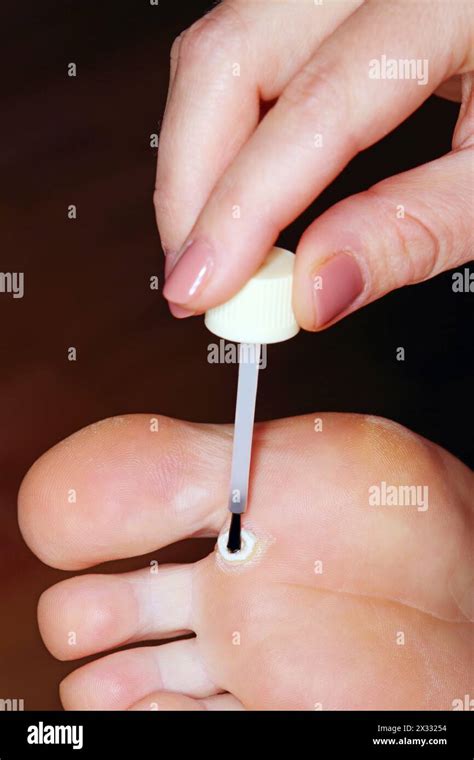Intro
Discover how Salicylic Acid treats warts effectively, using keratolysis to remove verrucas, plantar warts, and genital warts, promoting skin regeneration and healing.
Warts are a common skin condition that can be both unsightly and uncomfortable. They are caused by the human papillomavirus (HPV) and can appear anywhere on the body, although they are most commonly found on the hands and feet. While there are many treatments available for warts, salicylic acid is one of the most popular and effective options. In this article, we will explore the use of salicylic acid for warts treatment, including its benefits, working mechanisms, and steps for application.
Warts can be a source of embarrassment and self-consciousness for those who suffer from them. They can also be painful, especially if they are located on the soles of the feet or on the hands. Traditional treatments for warts, such as cryotherapy and surgery, can be painful and may not always be effective. This is why many people are turning to salicylic acid as a safe and effective alternative. Salicylic acid is a natural ingredient that has been used for centuries to treat a variety of skin conditions, including warts.
The use of salicylic acid for warts treatment has been widely studied and proven to be effective. It works by dissolving the keratin protein that makes up the wart, causing it to eventually fall off. Salicylic acid also has anti-inflammatory properties, which can help to reduce the pain and discomfort associated with warts. Additionally, salicylic acid has been shown to have antiviral properties, which can help to prevent the spread of the HPV virus that causes warts.
How Salicylic Acid Works

Salicylic acid works by penetrating deep into the skin and dissolving the keratin protein that makes up the wart. This causes the wart to gradually break down and eventually fall off. The acid also helps to prevent the growth of new warts by reducing the amount of keratin in the skin. Salicylic acid can be applied directly to the wart in the form of a cream, gel, or patch. It is usually applied once or twice a day, depending on the severity of the wart.
Benefits of Salicylic Acid for Warts Treatment
The benefits of using salicylic acid for warts treatment are numerous. Some of the most significant advantages include: * Effective: Salicylic acid has been shown to be highly effective in treating warts, with success rates of up to 70%. * Painless: Unlike traditional treatments for warts, such as cryotherapy and surgery, salicylic acid is generally painless. * Non-invasive: Salicylic acid is a non-invasive treatment that does not require any surgical procedures or injections. * Affordable: Salicylic acid is a relatively inexpensive treatment option, especially when compared to other methods. * Easy to use: Salicylic acid can be easily applied at home, making it a convenient treatment option.Steps for Applying Salicylic Acid

Applying salicylic acid for warts treatment is a relatively simple process. Here are the steps to follow:
- Wash the affected area: Before applying salicylic acid, wash the affected area with soap and water to remove any dirt or debris.
- Dry the area: Dry the area completely with a towel to help the salicylic acid penetrate deeper into the skin.
- Apply the salicylic acid: Apply a thin layer of salicylic acid to the wart, using a cotton swab or applicator.
- Cover the area: Cover the area with a bandage or patch to help keep the salicylic acid in place and protect the surrounding skin.
- Repeat the process: Repeat the process once or twice a day, depending on the severity of the wart.
Precautions and Side Effects
While salicylic acid is generally considered safe and effective, there are some precautions and side effects to be aware of. Some of the most common side effects include: * Redness and irritation: Salicylic acid can cause redness and irritation, especially if applied too frequently or in high concentrations. * Dryness: Salicylic acid can cause dryness and flakiness, especially if applied to sensitive skin. * Allergic reactions: Some people may be allergic to salicylic acid, which can cause more severe reactions such as itching, burning, and blistering.Types of Salicylic Acid Products

There are several types of salicylic acid products available for warts treatment, including:
- Creams and gels: These are the most common types of salicylic acid products and can be applied directly to the wart.
- Patches: Salicylic acid patches are adhesive strips that are applied directly to the wart and can be worn for several days.
- Solutions: Salicylic acid solutions are liquid products that can be applied to the wart using a cotton swab or applicator.
- Shampoos and soaps: Salicylic acid can also be found in shampoos and soaps, which can be used to treat warts on the scalp and body.
Home Remedies for Warts
In addition to salicylic acid, there are several home remedies that can be used to treat warts. Some of the most effective home remedies include: * Duct tape: Applying duct tape to the wart can help to irritate it and stimulate the immune system to fight off the virus. * Castor oil: Applying castor oil to the wart can help to soften it and reduce inflammation. * Tea tree oil: Applying tea tree oil to the wart can help to kill the virus and reduce inflammation. * Aloe vera: Applying aloe vera to the wart can help to soothe and calm the skin.Prevention of Warts

Preventing warts is easier than treating them. Here are some tips to help prevent warts:
- Practice good hygiene: Washing your hands regularly and avoiding contact with people who have warts can help to prevent the spread of the virus.
- Avoid sharing personal items: Avoid sharing personal items such as towels, razors, and nail clippers to prevent the spread of the virus.
- Wear protective clothing: Wearing protective clothing such as socks and gloves can help to prevent the spread of the virus.
- Keep your skin healthy: Keeping your skin healthy and moisturized can help to prevent warts from forming.
Common Myths About Warts
There are several common myths about warts that can be misleading and confusing. Some of the most common myths include: * Warts are caused by poor hygiene: While poor hygiene can contribute to the spread of warts, it is not the primary cause. * Warts are contagious: While warts can be spread through contact with an infected person, they are not highly contagious. * Warts can be treated with over-the-counter medications: While some over-the-counter medications can help to treat warts, they may not be effective for everyone.Conclusion and Final Thoughts

In conclusion, salicylic acid is a safe and effective treatment for warts. It works by dissolving the keratin protein that makes up the wart, causing it to eventually fall off. Salicylic acid can be applied directly to the wart in the form of a cream, gel, or patch, and can be used in conjunction with other home remedies such as duct tape and castor oil. By following the steps outlined in this article and taking precautions to prevent the spread of the virus, you can effectively treat and prevent warts.
We encourage you to share your thoughts and experiences with salicylic acid for warts treatment in the comments below. Have you used salicylic acid to treat warts? What were your results? Do you have any questions or concerns about using salicylic acid? Share your story and help others who may be struggling with warts.
What is salicylic acid and how does it work?
+Salicylic acid is a natural ingredient that works by dissolving the keratin protein that makes up the wart, causing it to eventually fall off. It also has anti-inflammatory and antiviral properties, which can help to reduce the pain and discomfort associated with warts and prevent the spread of the virus.
How long does it take for salicylic acid to work?
+The length of time it takes for salicylic acid to work can vary depending on the severity of the wart and the individual's skin type. On average, it can take several weeks to several months for the wart to completely disappear.
Are there any side effects of using salicylic acid?
+Yes, there are some potential side effects of using salicylic acid, including redness, irritation, and dryness. However, these side effects are generally mild and temporary, and can be minimized by following the instructions carefully and starting with a low concentration.
